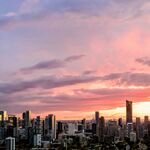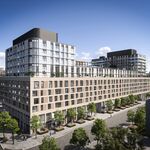ShonTron
Moderator
Member Bio
- Joined
- Apr 24, 2007
- Messages
- 12,531
- Reaction score
- 9,504
- Location
- Ward 13 - Toronto Centre
The transit signal cannot be the white vertical bar. That signal means (in Toronto) that you can turn left or right, but not go straight (see King & Sumach for example). In order to change that meaning, you'd first need to change every existing transit signal in the City - which is also difficult given that Ontario only permits that one type of bar and not the diagonal bars used elsewhere for turns.
The white bar simply means it's for transit vehicles only; though I understand why Toronto only currently uses them for streetcar/bus turn phases. Ottawa has used the white bar aspect, on regular traffic signals, to allow buses to jump red light queues and continue straight at a few intersections for many years. Vertical (go) and horizontal (stop) bars are used for the new ION LRT.





